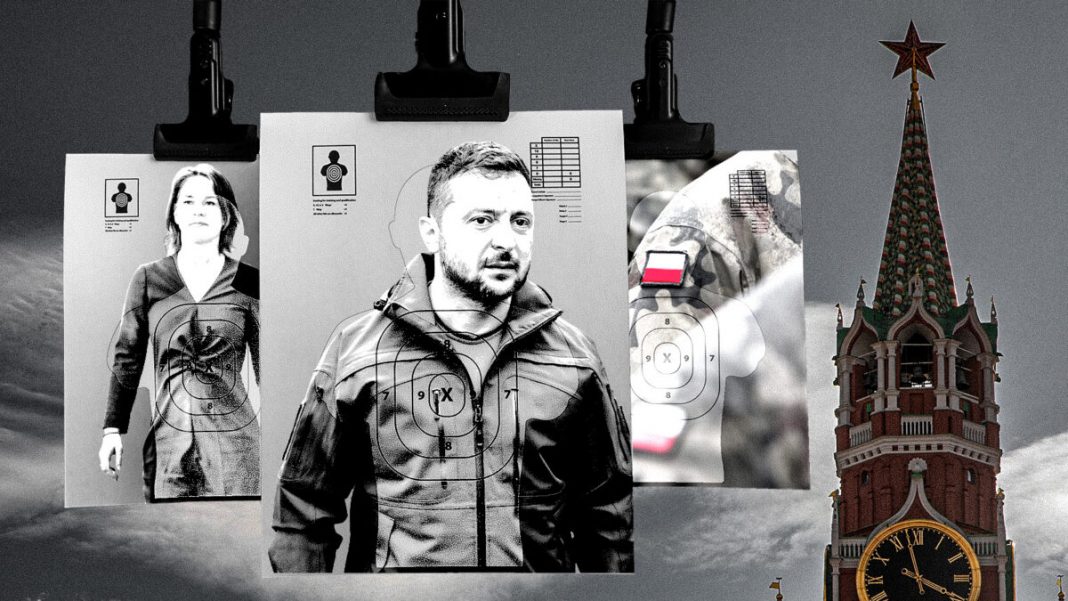In recent weeks, we have picked up a new wave of information attacks against European officials and institutions by pro-Kremlin disinformation actors. This time, not all of it is coming from Russia. The Belarusian regime is in on it as well.
On 4 September, a Telegram account published a video featuring German Foreign Minister Annalena Baerbock allegedly thanking Romania for increasing the export of ‘cocaine grain’ from Ukraine. RT quickly amplified the video, resulting in more than 166,000 views. The well-known propagandist Vladimir Solovyov also spread it, bringing in another 250,000 views.
The original video of a joint press conference of Baerbock and Romanian Foreign Minister Luminita Odobescu, published by the German Foreign Ministry, was edited by pro-Kremlin operators before they resurfaced it. Baerbock most likely misspoke and meant ‘grain from Ukraine’, but pro-Kremlin proxies did not let a good opportunity slip and used it to amplify a worn-out disinformation narrative about President Volodymyr Zelenskyy supposedly being a cocaine addict. This is not the first time Russia has targeted Baerbock.
President Zelenskyy – a staple in the pro-Kremlin disinformers’ diet
On 28 August, RT Arabic and two of its mirror sites published an article featuring claims by Douglas MacGregor, a former US Army colonel, that Zelenskyy will flee Ukraine in the future. To hide the disinformation narrative’s origins, a number of proxies republished the article without any reference to RT Arabic. While publicly pro-Russian, MacGregor was slightly misquoted in the original piece by RT Arabic. More importantly, this case falls within a well-established pattern of pro-Kremlin proxies amplifying content from RT Arabic while hiding the source.
This was not all regarding Zelenskyy. On 5 September, a post on Telegram allegedly showed the cover of the French newspaper Franc-Tireur depicting him living in a house made of Ukrainian soldiers’ corpses. The next day, 10 additional Telegram channels shared the image, raking in at least 279,000 views. The image also spread to several X (formerly known as Twitter) channels, VKontakte pages, and standalone websites. As you have probably guessed, the cover was fake. The outlet’s editorial board and independent fact-checkers quickly called out the impersonation attempt.

Belarusian regime singles out Poland
On 1 September, a Telegram account posted a screenshot featuring an alleged X post by a unit of the Polish Armed Forces. The X post purported to describe a dead soldier whose corpse showed ‘signs of violent death’. Other pro-regime channels soon reshared the Telegram post with the screenshot from X, generating more than 400,000 views.
The post on Telegram suggested that the soldier had been murdered and that the Polish military had deleted the original post to cover up the incident. No information has emerged regarding the alleged event. Importantly, the faked screenshot originated from a Belarusian-based Telegram channel, and the impersonated military unit is currently stationed at the Polish-Belarusian border.
This incident fits within a broader trend of Belarusian regime-linked actors singling out Poland in their information manipulation efforts. On 6 September, Radio Belarus set up a Telegram channel targeting Polish-speaking audiences, while its YouTube channel in Polish has been publishing daily since the end of August. Radio Belarus is run by the government-owned and EU-sanctioned entity Belteleradio, known for disseminating pro-Kremlin and pro-Belarus-regime disinformation.
The Russian disinformation ecosystem is also having a go at Poland as well as Ukraine. On 7 September, a Telegram account posted an alleged screenshot from the popular Polish website Gratka.pl of a call to hunt down and deport Ukrainian citizens who are subject to mobilisation. Pro-Kremlin channels on Telegram and other platforms soon amplified the forged screenshot of a post that Gratka.pl never published, triggering over 117,000 views.
Impersonation is not new. The first EEAS report on foreign information manipulation and interference threats, published back in February 2023, highlighted impersonation as a favoured technique among pro-Kremlin actors. Thanks to this new way of monitoring the threat landscape – focusing on manipulative behaviour in addition to disinformation narratives – we can now detect and expose this type of manipulative behaviour that the Kremlin and their allies are using to target Europeans on a regular basis.
The incidents above also serve as a timeless reminder of the fact that we cannot really trust our eyes only. When in slightest doubt, we should always check the source of our information.





